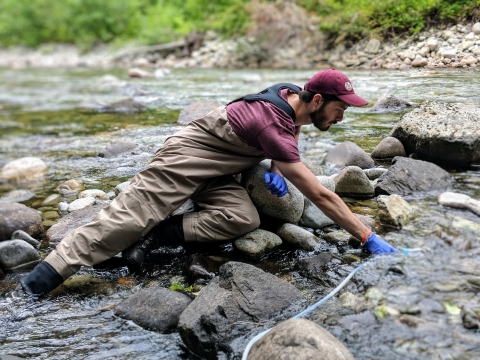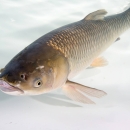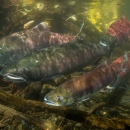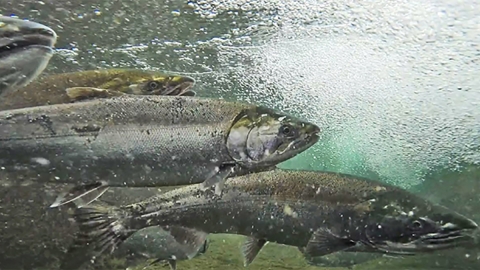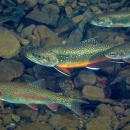What We Do
America’s fisheries are among the world’s richest in abundance and diversity. They provide scientific, aesthetic, recreational, commercial, subsistence, cultural, social, and economic benefits. Fish health is a critical component of healthy fisheries and core to the conservation mission of the U.S. Fish and Wildlife Service.
Our Programs
National Investigational New Animal Drug Sponsorship Program
The Aquatic Animal Drug Approval Partnership program sponsors a variety of medications under the U.S. Food and Drug Administration’s Investigational New Animal Drug program. The program is available to all fish culturists, fish biologists, and fishery managers within the United States and U.S. territories and allows participating facilities to have legal access to a broad variety of medications that are still in the approval process.
New Animal Drug Approval Assistance Program
We assist sponsors in navigating the FDA’s New Animal Drug Approval process where needed. This involves helping a new sponsor start the approval process and helping current sponsors find ways to keep moving forward in the approval process.
Outreach Program
Our researchers, physiologists, nutritionists, and veterinary scientists provide fisheries professionals with up-to-date information about existing and pending drug approvals, as well as extensive drug use guidance information.
Diagnostic and Testing Services
Fish Health Centers across the United States can respond rapidly with diagnostic testing to identify and assess the risks associated with exotic pathogens when they are inadvertently introduced into the U.S., or new areas or species.
Nationwide Fish Health Monitoring
Monitoring activities are an important element in any comprehensive aquatic animal health effort. The frequent monitoring of pathogens, environmental conditions, nutrition, and physiological parameters are essential to detect and solve problems before significant mortality occurs. Monitoring will promote and help evaluate good fish culture and fishery management practices.
Our Services
Investigational New Animal Drugs
Investigational New Animal Drugs are drugs that are in the approval pipeline but are not yet approved by FDA for use in the United States. They are strictly controlled by the FDA’s Center for Veterinary Medicine and the Service’s Aquatic Animal Drug Approval Partnership.
Our Projects and Research
Aquatic Animal Drug Approval Partnership Applied Research Program
Our applied research program conducts studies that evaluate the safety and efficacy of experimental medications. Results of these analyses are used to support U. S. Food and Drug Administration approval of the drug.
Fish Health Centers and Fish Technology Centers
Fish Health Centers develop diagnostic procedures and vaccines to prevent disease and apply new research methods and techniques that improve fish health. They also provide technical assistance to federal, state, and tribal partners as well as to the private aquaculture industry.
Fish Technology Centers play a leading role in guiding the science and technology that is foundational to species and habitat conservation in the United States. They assist with the recovery of endangered, threatened, and declining populations of fish and other aquatic species, prevent the spread of aquatic invasive species invasive species
An invasive species is any plant or animal that has spread or been introduced into a new area where they are, or could, cause harm to the environment, economy, or human, animal, or plant health. Their unwelcome presence can destroy ecosystems and cost millions of dollars.
Learn more about invasive species , and improve fish culture technology and culture protocols.



